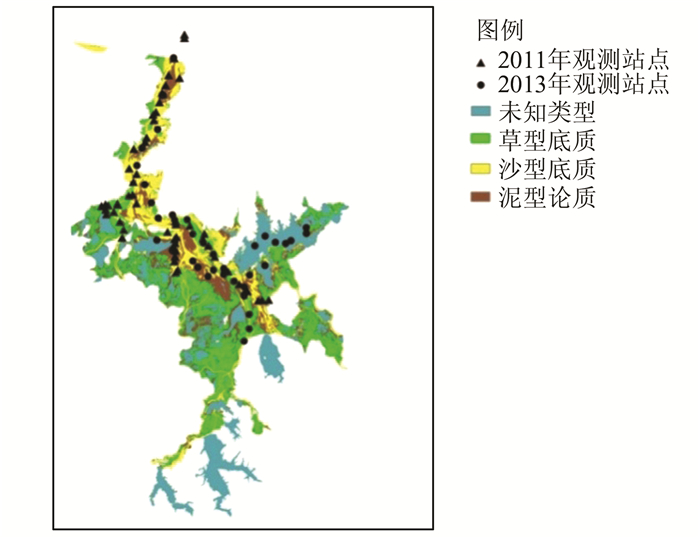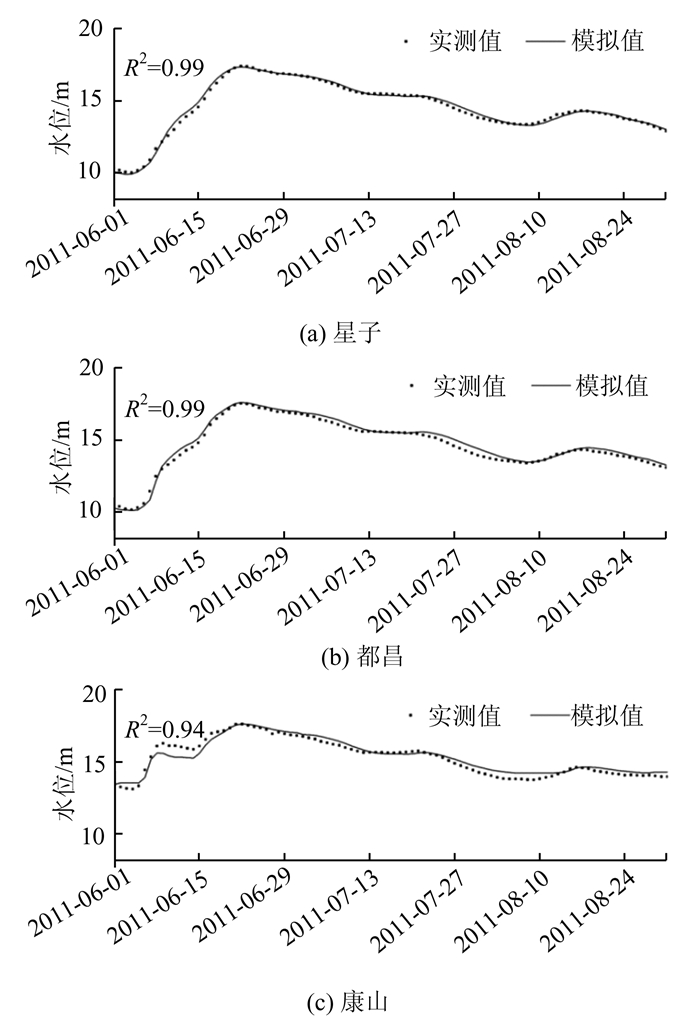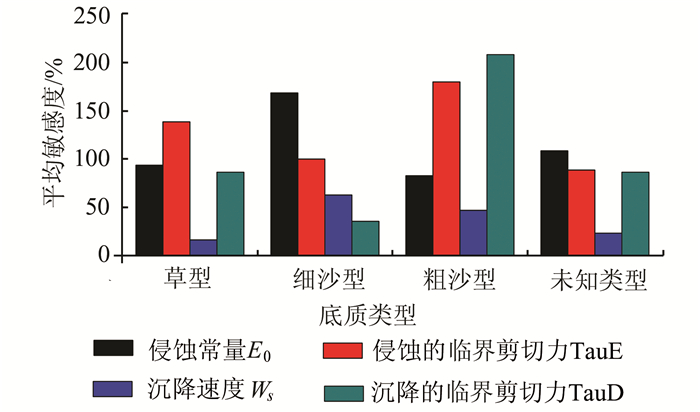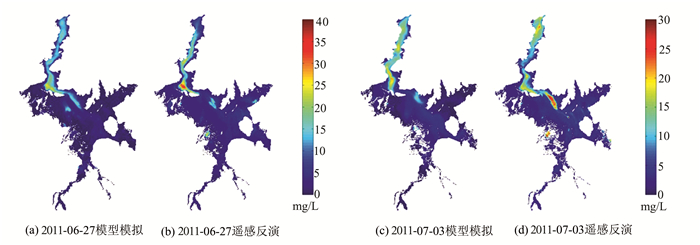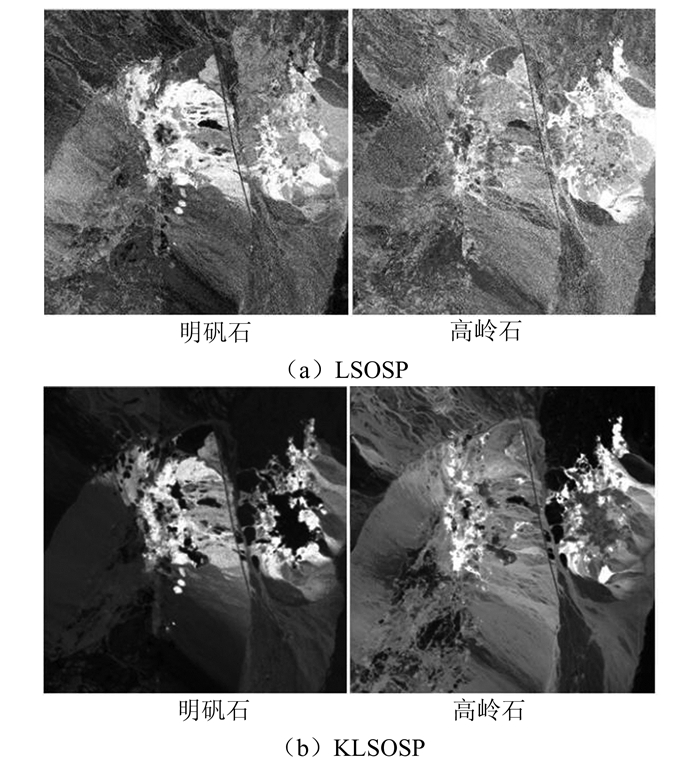-
摘要: 为了提高高光谱遥感图像混合像元分解的精度,提出基于核方法的高光谱线性解混。采用核化正交子空间投影(orthogonal subspace projection,OSP)算子、最小二乘正交子空间投影(least squares OSP,LSOSP)算子、非负约束最小二乘(nonnegative constrained least-squares,NCLS)算子和全约束最小二乘(fully constrained least-squares,FCLS)算子等方法分别构建核正交子空间投影(Kernel OSP,KOSP)、核最小二乘正交子空间投影(Kernel LSOSP,KLSOSP)、核非负约束最小二乘(Kernel NCLS,KNCLS)和核全约束最小二乘(Kernel FCLS,KFCLS)高光谱图像混合像元解混模型。对CUPRITE矿区AVIRIS数据进行KLSOSP、KNCLS和KFCLS与LSOSP、NCLS和FCLS丰度反演对比实验,结果表明,对于混合像元广泛存在的高光谱遥感图像来说,基于核方法的KLSOSP,KNCLS和KFCLS的解混精度优于LSOSP,NCLS和FCLS;附加约束条件有利于提高丰度反演的精度。Abstract: In order to improve the accuracy of hyperspectral pixel un-mixing, a Kernel based pixel un-mixing method was proposed in this paper. By kernelizing orthogonal subspace projection (OSP) operator, least squares OSP (LSOSP) operator, nonnegative constrained least squares (NCLS) operator and fully constrained least squares (FCLS) operator respectively, the authors established Kernel OSP (KOSP), Kernel LSOSP (KLSOSP), Kernel NCLS (KNCLS) and Kernel FCLS (KFCLS) to hyperspectral imagery pixel un-mixing. The comparison experiments of abundance inversion by using KLSOSP, KNCLS, KFCLS and LSOSP, NCLS, FCLS to CUPRITE AVIRIS data were carried out. The results show that for heavily mixed hyperspectral images, the pixel un-mixing accuracy of Kernels based KLSOSP, KNCLS and KFCLS is higher than that of LSOSP, NCLS and FCLS. Meanwhile, the constraint conditions can improve the accuracy of abundance estimates.
-
Keywords:
- hyperspectral remote sensing /
- Kernel trick /
- pixel un-mixing /
- OSP
-
悬浮泥沙是湖泊生态系统重要影响因子。一方面,与悬浮泥沙输移有关的冲淤和侵蚀作用过程改变湖盆形态,从而改变其水动力过程,影响湖泊调蓄能力及其湿地水环境与水生态系统[1];另一方面,悬浮泥沙会使水体浑浊,从而降低水体透光度和改变富氧条件,影响湖泊水生生物的光合作用,加之悬浮泥沙作为污染物的载体,吸附与解吸N、P营养盐与重金属等多种污染物[2],通过水流作用形成的泥沙输移、再悬浮与沉降,会影响污染物在水体中的迁移转化过程。因此,掌握悬浮泥沙的时空动态是研究湖泊水环境与水生态研究的基础。
鄱阳湖作为长江流域最大的通江淡水湖泊,在调蓄长江洪水和控制长江水质等方面发挥重要作用。受到自然和人为因素的影响,由鄱阳湖浑浊水体悬浮泥沙导致的水环境问题日益突出,悬浮泥沙成为影响鄱阳湖水生态安全的一个重要因子[3],快速而准确地获取水体悬浮泥沙时空动态信息,对鄱阳湖流域生态环境与经济社会的可持续发展具有重要的意义。
湖泊水动力过程是湖泊水体悬浮泥沙输移扩散的重要因素,因此,利用水力学数值模型一直是研究悬浮泥沙时空动态的重要手段。利用数值模型进行湖泊悬浮泥沙模拟预测研究在国内外也比较广泛[4-7]。国内对于湖泊悬浮泥沙数值模拟的研究起步较晚,如施勇建立洞庭湖泥沙淤积数值模型[8],对洞庭湖泥沙输移和湖底变形进行了模拟;周杰建立了太湖粘性泥沙输移模型[9],并利用实测太湖含沙量资料进行了对比分析,结果表明该泥沙模型基本反映了泥沙输运的特点。然而, 利用悬浮泥沙数值模型进行鄱阳湖悬浮泥沙输运的研究目前还没有见诸报道。
数值模拟需要足够的数据进行模型参数率定和结果验证,然而利用现场观测获取这些数据不仅费时费力,而且有限的数据量也无法满足进行数值模拟研究的要求[10]。卫星遥感具有大范围获取水环境真实信息的特点,从而为数值模拟提供了大量的数据源[11]。目前,结合数值模拟和遥感进行悬浮泥沙的研究在国外比较多见,且主要集中在海岸带水环境研究方面[12-14],国内进行这方面的研究较少。
本文在鄱阳湖水动力模型[10]的基础上进行鄱阳湖泥沙输移过程的数值模拟,利用鄱阳湖底质类型数据辅助对不同底质类型区域上的悬浮泥沙输移数值模型参数进行敏感性分析,基于敏感性分析结果,利用实测站点数据对模型参数进行了分区率定,建立鄱阳湖悬浮泥沙输移模型,并利用该模型进行模拟预测和实测数据的模型验证,最后对比分析了模型模拟和遥感反演的悬浮泥沙空间分布特征,探讨了利用该模型进行鄱阳湖悬浮泥沙时空动态变化研究的可行性。
1 研究区域与数据
1.1 研究区域
鄱阳湖 (28°22′N~29°45′N、115°47′E~116°45′E) 地处江西省北部,长江中下游南岸 (图 1),是我国最大的淡水湖泊。鄱阳湖分为南、北两部分,其中南部宽广、较浅,为主湖区;北部狭长、较深,为湖水入长江水道区。鄱阳湖主要接纳赣江、抚河、信江、饶河、修水等五大江河 (以下简称五河) 来水,经调蓄后由湖口汇入长江,鄱阳湖水位随季节的变化明显,是一个过水性、吞吐型的湖泊。
1.2 数据准备
本文对丰水期鄱阳湖水动力和泥沙输移进行数值模拟,模型模拟的时间段为2011-06-01~08-31和2013-06-01~08-31。研究涉及以下4个方面数据。
1) 鄱阳湖及其流域水文数据,包括星子、都昌、康山3个水文站点的逐日水位数据,赣江外洲站、修水虬津站和万家埠站、饶河渡峰坑和虎山站、信江梅港站、抚河李家渡站、湖口站的逐日流量和含沙量数据 (图 1)。
2)2011-07-15~24,对鄱阳湖丰水期湖面进行了8 d的湖泊调查,期间利用走航式ADCP (acoustic Doppler current profilers) 测量了两个断面的流速,分别是都昌附近的断面和入江水道上的断面 (图 1),同时采集了56个站点的表层水样 (图 2),利用称重法得到样品的总悬浮泥沙浓度[15]。另外,2013-08-03~08的湖泊调查采集了37个站点的悬浮泥沙浓度数据 (图 2)。
3) 根据鄱阳湖枯水期底质裸露的特点,利用监督分类方法从2009-10-26的鄱阳湖Landsat TM5卫星影像以及2010-12-9的HJ卫星影像得到的鄱阳湖底质类型数据 (图 2),得到鄱阳湖底质类型有粗沙底质、细泥沙底质、草底质和未知底质区[16],该数据被用来进行泥沙模型参数敏感性分析和率定。
4) 从国家资源卫星中心下载2011-06-27和2011-07-03 HJ-CCD卫星数据,先后对影像数据进行几何校正和大气校正,利用TSMI遥感反演悬浮泥沙浓度模型[17],反演得到鄱阳湖悬浮泥沙空间分布数据。
2 研究方法
2.1 模型建立与参数选取
本文基于荷兰Delft University开发的Delft3D-FLOW水流模型建立鄱阳湖水动力与泥沙输移模拟的模型。Delft3D-FLOW建立在Navier-Stokes方程的基础上,采用交替方向法 (alternating direction implicit, ADI) 对控制方程进行离散求解[18],计算稳定性好且计算速度快。Delft3D-FLOW中包含泥粘性和非粘性泥沙模型模块,一般认为,粘性泥沙包括细颗粒沉积物和粒径小于75 μm的部分[19]。张伟[18]对鄱阳湖总悬浮无粒径分布进行了分析,表明鄱阳湖主要以粒径小于74.48 μm的粘性泥沙为主,因此本研究主要对鄱阳湖粘性泥沙进行模拟。2011-06-01~08-31泥沙模拟过程如下。
1) 利用Dleft3D-RGFGRID工具在模拟区域范围上划分四方形的正交计算网格,网格尺寸大约为200~300 m;利用Delft3D-QUICKIN工具将30 m分辨率的湖底高程数据通过空间差值得到模型计算网格的地形,考虑到一个网格内有多个高程数据点,将网格内所有高程点的高程平均值作为模型计算网格高程;
2) 模拟计算时间步长设置为5 min;由于丰水期鄱阳湖南北湖区水位差异不大,取模拟首日赌场水文站的水位作为模拟的初始水位;使用初始流速和泥沙浓度为0时将模型冷启动。
3) 模型上游边界考虑五河流量和泥沙注入,选取9个河流注入口设置模拟的入湖口,赣江支流4个入湖口 (图 1),一支在吴城附近流入鄱阳湖入湖流量和泥沙浓度设置为外洲站监测数据的50%,另三支在鄱阳湖西南部流入鄱阳湖,流量分别设置为外洲站监测数据的10%、20%和20%;饶河流经渡峰坑和虎山进入鄱阳湖的两条支流分别设置一个流入口,抚河、信江、修水都设置为一个河流注入口,入湖流量和含沙量分别为各自水文站点的监测值;以湖口附近鄱阳湖流入长江口为开边界,开边界条件为湖口站每日水位。
水动力参数主要包括涡黏性系数和底部糙率系数,涡黏性系数采用文献[20]的研究结果,本文中糙率系数利用实测的流速数据进行率定;粘性泥沙运动主要包括沉降和再悬浮过程,Delft3D中泥沙沉降再悬浮采用Partheniades-Krone的计算方法[21],主要的参数有泥沙沉降速度、沉降的临界剪切力、底部泥沙侵蚀系数和侵蚀的临界剪切力。经过反复模拟并将模拟结果和实测泥沙浓度进行比较,初步得到空间上一致的泥沙模型参数值 (表 1),由于改组参数无法足够准确地模拟鄱阳湖悬浮泥沙侵蚀和沉降过程,因此,需要进一步对这些参数进行率定。
表 1 空间上一致的泥沙模型参数Table 1. Spatial-uniform Parameters of Sediment Model参数 参数值 标志 沉降速度/(m·s-1) 1.2×10-4 Ws 沉降的临界剪切力/ (N·m-2) 0.01 TauD 侵蚀的临界剪切力/(N·m-2) 0.06 TauE 侵蚀系数/(kg·(m-2·s-1)) 4×10-7 E0 2.2 泥沙模型参数敏感性分析与率定
鄱阳湖不同区域上底质类型不同会导致不同区域上泥沙再悬浮和沉降过程的差异,同时考虑空间分布上一致的泥沙模型参数无法准确地模拟鄱阳湖的泥沙输移过程,本研究使用空间上不一致的泥沙模型参数进行鄱阳湖泥沙的数值模拟。为了更好地分区率定得到空间上不一致的泥沙模型参数,本研究利用鄱阳湖底质类型数据辅助进行不同底质区域上泥沙模型参数的敏感性。
常规的敏感性分析采用一次一个变量法,即每次只变动一个参数,而保持其他参数不变来运行模型,从而判断其对模型结果输出的影响。利用该方法敏感性计算如下:

(1) 式中, F(x) 为在参考参数x下的泥沙模拟结果;F(x+50%) 表示参考参数增加50%后的泥沙模拟结果;Si为泥沙浓度对参数变化表现出的敏感性,Si越大,就代表参数x模型影响越大。本研究泥沙模型中泥沙沉降速度、沉降的临界剪切力、底部泥沙侵蚀系数和侵蚀的临界剪切力参考参数适用表 1的结构,考虑到单个网格位置上的泥沙模型参数敏感性不足以代表某个底质类型区域上泥沙模型参数敏感性,因此,本文将某一底质类型的模拟空间区域上选取均匀分布的100个网格点的平均敏感度作为该底质类型的泥沙模型参数敏感度。

(2) 式中,平均敏感性Sa就代表该底质类型的模拟区域对参考参数x的敏感性程度。基于不同区域上各泥沙模型参数的敏感性分析结果,针对不同底质区域按参数敏感性程度手动调整泥沙模型参数,将模拟结果和和对应底质区上的实测数据进行比较,从而得到不同底质区上合适的空间上不一致的泥沙模型参数。
3 结果与讨论
3.1 水动力模型参数率定与验证
利用ADCP测量流速数据对底部糙率进行手动率定,选取一个最优的糙率值,结果表明,当底部糙率为0.026时,模拟结果的均方根误差最小。图 3是糙率为0.026时模拟流苏大小和ADCP实测流速数据的比较图。模拟的流速能较好地拟合实测流速,模拟流速平均相对误差为9.3%,相关系数平方达到0.91。可以看到较个别数据采集点位置ADCP测量流速较模拟结果偏大很多,可能原因是ADCP航迹在航道附近,受航道上船只航行造成的波流的影响,ADCP测量流速数据突然变大。
将鄱阳湖湖区星子、都昌、康山等3个水文站实测水位数据和模拟的水位进行对比 (图 4),可以看到模拟水位与实测结果有很好的一致性,3个水位站模拟水位的平均相对误差分别为1.0%、1.4%、1.7%,与实测水位的R2分别为0.99、0.99、0.94。总的来说,该模型能很好地模拟鄱阳湖丰水期水动力变化。
3.2 泥沙模型参数敏感性
利用变化其中一个泥沙模型参数进行参数敏感性分析,得到不同底质区4个参数的敏感性分析比较,如图 5所示。从图 5可以看出,各类型底质区上泥沙模型各参数的敏感性有较明显的差异,导致这种差异的原因是不同底质对底部泥沙再悬浮和泥沙沉降的作用能力各不相同。对于草型底质区中,泥沙模拟对侵蚀的临界剪切力的敏感性最高;其次是侵蚀常量,敏感性最小的是泥沙沉降速度,草型底质对底部侵蚀的阻碍较大,底部泥沙再悬浮能力较弱。因此,对存在该底质的区域对侵蚀过程的参数更加敏感;细沙型底质区域中,泥沙模拟对侵蚀常量的敏感性最高,这是因为底部细沙更容易再悬浮;粗砂型底质区域泥沙模拟敏感性最高的是泥沙沉降的临界剪切力,其次是泥沙侵蚀的临界剪切力,可能原因是该类底质区域中较粗颗粒的泥沙侵蚀再悬浮后,由于泥沙粒径较大,泥沙也更容易沉降到底部;对于未知底质类型区域,各个参数的敏感性的高低与草型底质有较大的相似,可以推测未知底质类型区域可能含有大量的水草。鄱阳湖各个底质类型区域泥沙模拟对侵蚀过程中的模型参数敏感性高于沉降过程中泥沙模型参数的敏感性。
3.3 泥沙模型参数分区率定
由于不同底质区域上模型参数对模拟结果影响的不同,本研究考虑采用使用空间上不一致的模型参数进行泥沙的模拟,从而更加准确地模拟鄱阳湖悬浮泥沙的时空动态变化。根据不同底质类型区上泥沙模型参数敏感性分析结果,利用位于不同底质区上的实测泥沙数据,每一类底质区手动进行参数率定。以草型底质区参数率定为例,考虑到草型底质区泥沙侵蚀 (再悬浮) 的临界剪切力最敏感,首先考虑调整该参数来调整模拟结果,由于底部侵蚀的临界剪切力越大,再悬浮的泥沙量越少,悬浮泥沙浓度越低,因而在率定过程中考虑将该参数调大,降低模拟的悬浮泥沙浓度值,使模拟结果与实测值接近。表 2是分区率定的结果,从表中可以看出,草型底质区临界剪切力从0.06 N/m2调整为0.3 N/m2,变化幅度较大。为了取得更好的模拟结果,使模拟结果相对于实测数据的误差进一步减小,需要在此基础上微调其他次级敏感参数,因此,对侵蚀常量和沉降的临界剪切力进行了微调。参数率定后,草型底质区上站点模拟结果均方根误差为24.5 mg/L,误差减少了79.6%,同样针对细沙和粗砂底质类型区域,使用类似的过程对这些区域上的模型参数进行率定。表 2给出了不同底质区域上的泥沙模拟参数率定后最终的参数的取值。由于未知底质类型的区域上没有实测站点的数据,因而无法利用参数率定确定该类底质区域上泥沙模型参数,考虑到未知底质类型上各参数的敏感性和草型底质类型上各参数的敏感性相近,因此,在模型中未知底质类型区域使用与草型底质类型相同的泥沙模拟参数。
表 2 基于敏感性分析结果的不同底质区域参数率定结果Table 2. Parameters of Sediment Transport Model in Different Substrate Type Area Based on Sensitivity Analysis Results底质类型 泥沙侵蚀的参数 泥沙沉降的参数 侵蚀常量
E0/(kg·(m-2·s-1))侵蚀的临界剪切力
TauE/(N·m-2)沉降速度
Ws/(m·s-1)沉降的临界剪切力
TauD/(N·m-2)草 2×10-7 0.3 1.2×10-4 0.02 细沙 6×10-7 0.06 1.2×10-4 0.01 粗砂 4×10-7 0.04 2.0×10-4 0.005 未知 2×10-7 0.3 1.2×10-4 0.02 使用表 2中空间上不一致的模型参数进行模拟,使用表 1中空间一致的模型参数模拟结果与实测值进行对比,如图 6所示,使用空间一致和空间不一致泥沙模型参数的模拟结果差异较大,特别是位于草型底质区的站点上 (图 6中站点编号10~20之间),这些站点上使用空间一致的模型参数悬浮泥沙模拟结果异常大,参数率后模拟结果大幅度变小,且更接近实测的悬浮泥沙浓度。这是由于使用空间上不一致的参数,对草型底质类型区域上泥沙模型参数进行单独率定后,草型区域上泥沙侵蚀常量变小,而泥沙侵蚀的临界剪切力变大,从而使得草型底质区域泥沙再悬浮的能力减弱,模拟得到的悬浮泥沙浓度变小而更接近实测的泥沙浓度。总之,使用空间不一致的泥沙模型参数考虑了不同底质区域上泥沙沉降和再悬浮过程的差异,通过参数分区率定得到空间不一致的的模型参数模拟的悬浮泥沙浓度能更好地拟合实测值。参数分区率定后,相对于实测结果,模拟的泥沙浓度均方根误差为21.6 mg/L,相对于参数率定前使用空间一致的模型参数模拟的结果,均方根误差减少86.2%。因此,研究表明分区率定得到的泥沙模型参数满足鄱阳湖悬浮泥沙模拟的要求。
3.4 模型预测结果的验证
为了进一步验证模型的有效性,对2013年丰水期6~8月的悬浮泥沙输移过程进行模拟预测,并用2013年8月份湖区调查实测的悬浮泥沙浓度对预测结果的有效性进行验证。图 7为实测和模型预测结果的对比,可以看到预测的悬浮泥沙浓度和实测的泥沙浓度具有较好的一致性,预测的泥沙浓度均方根误差为19.8 mg/L,相关系数R2为0.78。从图 7可以看到,某些站点泥沙模拟结果明显低于实测的泥沙浓度,这是因为这些站点位于鄱阳湖采砂区附近,采砂活动导致底部泥沙大量的再悬浮,进而扩散到附近水域,因此导致实测泥沙浓度较大。本研究的悬浮泥沙输移模型能够合理地进行鄱阳湖悬浮泥沙输移过程预报。
3.5 模拟和遥感反演的悬浮泥沙空间的对比
遥感对地观测是对地表水质进行间接观测的一种方式,遥感水环境监测有着其真实可靠的特点,能够很好地表现水坏境要素的空间分布状态。为了进一步证实本研究建立的泥沙输移数值模型模拟预测鄱阳湖悬浮泥沙的可靠性,本研究利用遥感反演的悬浮泥沙浓度空间分布数据。图 8是遥感反演的2011-06-27和07-03悬浮泥沙空间分布和对应时间点模拟的悬浮泥沙空间分布,可以看到,在整体上模型模拟和遥感监测到的悬浮泥沙分布特征在空间上相近,都表现为北部入江水道和南部湖区悬浮泥沙浓度较高,泥沙浓度在20 mg/L左右;而南部湖区泥沙浓度较低,泥沙浓度在5 mg/L左右,可以认为模型结果与遥感反演结果具有较好的空间一致性。因此,该模型能够模拟预测得到满意的鄱阳湖悬浮泥沙空间分布状态。图 8中,在2011-06-27和2011-07-03两个相近的时间点,模拟得到的悬浮泥沙空间分布有一定的差异,这说明该模型具有模拟鄱阳湖悬浮泥沙时间动态变化的能力,因此,利用该模型进行鄱阳湖悬浮泥沙时空动态变化特征及其影响机制的研究,将是一个十分有用的工具。
4 结论与展望
本研究针对丰水期鄱阳湖,充分利用遥感数据辅助进行了鄱阳湖悬浮泥沙浓度遥感的模拟预测。
1) 利用遥感监测的鄱阳湖底质类型数据进行了悬浮泥沙模型参数敏感性分析,研究表明,鄱阳湖不同底质的区域上泥沙模型参数具有较大的空间差异;
2) 基于敏感性分析结果,对鄱阳湖不同区域上的泥沙模型参数进行了分区率定。实测悬浮泥沙浓度数据验证表明,利用分区率定得到的模型参数能够较好地模拟预测鄱阳湖悬浮泥沙输移过程。
3) 将模型模拟和遥感反演的悬浮泥沙浓度空间分布进行了比较,两者具有很好的空间分布一致性,表明该模型能够模拟预测鄱阳湖悬浮泥沙的时空动态变化。
本研究结合数值模拟和遥感为湖泊水环境的模拟预测提供了有效的方法,同时建立的模型为研究鄱阳湖水环境时空动态变化特征及其影响机制打下了坚实的基础。进一步的研究还可以利用类似方法建立鄱阳湖三维悬浮泥沙输移模型,在泥沙模型的基础上加入水质要素的模拟,分析悬浮泥沙影响下鄱阳湖水质要素空间动态变化机制;另外,利用模型模拟和遥感反演悬浮泥沙的误差信息,并同时利用数据同化方法,进一步提高鄱阳湖悬浮泥沙时空动态变化模拟预测的能力。
-
表 1 KLSOSP、KNCLS、KFCLS与LSOSP、NCLS、FCLS解混均方根误差对比
Table 1 Comparing RMSE of KLSOSP, KNCLS, KFCLS and LSOSP, NLS, FCLS
RMSE KLSOSP/
LSOSPKNCLS/
NCLSKFCLS/
FCLS最大值 0.014 7/
0.065 30.006 6/
0.021 40.003 4/
0.007 3均值 0.006 1/
0.027 10.003 1/
0.009 20.001 7/
0.003 0 -
[1] 李德仁, 童庆禧, 李荣兴, 等.高分辨率对地观测的若干前沿科学问题[J].中国科学 (地球科学), 2012, 42(6):805-813 http://www.cnki.com.cn/Article/CJFDTOTAL-JDXK201206004.htm Li Deren, Tong Qinxi, Li Rongxing, et al. Current Issuesin High-resolution Earth Observation Technology[J]. Sci China (Earth Sci), 2012, 42(6):805-813 http://www.cnki.com.cn/Article/CJFDTOTAL-JDXK201206004.htm
[2] Chang C I.Hyperspectral Data Processing: Algorithm Design and Analysis[M].New York: John Wiley and Sons Inc, 2013
[3] Zhang Liangpei, Huang Xin. Advanced Processing Techniques for Remotely Sensed Imagery[J]. Journal of Remote Sensing, 2009, 13(4):559-569 https://www.researchgate.net/publication/268304391_Advanced_processing_techniques_for_remotely_sensed_imagery
[4] Rosin P L. Robust Pixel Unmixing[J]. IEEE Transactions on Geoscience and Remote Sensing, 2001, 39(9): 1 978-1 983 doi: 10.1109/36.951088
[5] 普晗晔, 王斌, 张立明.基于单形体几何的高光谱遥感图像解混算法[J].中国科学 (信息科学), 2012, 42(8): 1 019-1 033 http://www.cnki.com.cn/Article/CJFDTOTAL-PZKX201208010.htm Pu Hanye, Wang Bin, Zhang Liming. Simplex Geometry-based Abundance Estimation Algorithm for Hyperspectral Unmixing[J]. Sci China (Info Sci), 2012, 42(8): 1 019-1 033 http://www.cnki.com.cn/Article/CJFDTOTAL-PZKX201208010.htm
[6] Wirasakti S, Zein R A, Mafazi F. Comparative Study of Land Cover Linear Spectral Mixture Analysis (LSMA) Model on Multispectral and Hyperspectral Imagery[C].The 34th Asian Conference on Remote Sensing, Bali, Indonesia, 2013
[7] 赵春晖, 肖健钰.一种利用互信息加权的最小二乘法丰度反演算法[J].沈阳大学学报 (自然科学), 2014, 26(1):45-49 http://www.cnki.com.cn/Article/CJFDTOTAL-SYDA201401012.htm Zhao Chunhui, Xiao Jianyu. An Abundance Inversion Algorithm Based on Mutual Information Weighted Least Square Error[J]. Journal of Shenyang University Natural Science, 2014, 26(1):45-49 http://www.cnki.com.cn/Article/CJFDTOTAL-SYDA201401012.htm
[8] 唐晓燕, 高昆, 倪国强.高光谱图像非线性解混方法的研究进展[J].遥感技术与应用, 2013, 28(4):731-738 http://www.cnki.com.cn/Article/CJFDTOTAL-YGJS201304028.htm Tang Xiaoyan, Gao Kun, Ni Guoqiang. Nonlinear Spectral Unmixing of Hyperspectral Images[J].Remote Sensing Technology and Application, 2013, 28(4):731-738 http://www.cnki.com.cn/Article/CJFDTOTAL-YGJS201304028.htm
[9] Camps-Valls G, Bruzzone L. Kernel Methods for Remote Sensing Data Analysis[M]. New York: John Wiley & Sons Ltd, 2009
[10] Hosseini S A, Ghassemian H. A New Fast Algorithm for Multiclass Hyperspectral Image Classification with SVM[J]. International Journal of Remote Sensing, 2011, 32(23): 8 657-8 683 doi: 10.1080/01431161.2010.547882
[11] Broadwater J, Banerjee A. Mapping Intimate Mixtures Using an Adaptive Kernel-based Technique[C]. The 3rd Workshop on Hyperspectral Signal Processing: Evolution in Remote Sensing, Wuhan, 2011
[12] 刘婷婷, 林珲, 张良培, 等.利用SVM相关反馈和语义挖掘的遥感影像检索[J].武汉大学学报·信息科学版, 2012, 37(4):415-418 http://ch.whu.edu.cn/CN/abstract/abstract179.shtml Liu Tingting, Lin Hui, Zhang Liangpei, et al. SVM-relavance-feedback and Semantic-extraction-based RS Image Retrieval[J].Geomatics and Information Science of Wuhan University, 2012, 37(4):415-418 http://ch.whu.edu.cn/CN/abstract/abstract179.shtml
[13] 王晓飞, 张钧萍, 张晔.高光谱图像混合像元分解算法[J].红外与毫米波学报, 2010, 29(3):210-216 doi: 10.3724/SP.J.1010.2010.00210 Wang Xiaofei, Zhang Junping, Zhang Ye. Unmixing Algorithm of Hyperspectral Images[J]. Journal of Infrared Millim Waves, 2010, 29(3):210-216 doi: 10.3724/SP.J.1010.2010.00210
[14] 谭熊, 余旭初, 张鹏强, 等.基于多核支持向量机的高光谱影像非线性混合像元分解[J].光学精密工程, 2014, 22(7):1 912-1 920 doi: 10.3788/OPE. Tan Xiong, Yu Huchu, Zhang Liangpei, et al. Nonlinear Mixed Pixel Decomposition of Hyperspectral Imagery Based on Kernel SVM[J]. Optics and Precision Engineering, 2014, 22(7):1 912-1 920 doi: 10.3788/OPE.
[15] Kwon H, Nasrabadi N M. Kernel Orthogonal Subspace Projection for Hyperspectral Signal Classification[J]. IEEE Geoscience and Remote Sensing, 2005, 43(12):2 952-2 962 doi: 10.1109/TGRS.2005.857904
[16] Liu K H, Wong E, Du E Y, et al. Kernel-based Linear Spectral Mixture Analysis[J]. IEEE Geoscience and Remote Sensing Letters, 2012, 9(1):129-133 doi: 10.1109/LGRS.2011.2162088
[17] 王挺, 杜博, 张良培.顾及局域信息的核化正交子空间投影目标探测方法[J].武汉大学学报·信息科学版, 2013, 38(2):200-204 http://www.cnki.com.cn/Article/CJFDTotal-WHCH201302018.htm Wang Ting, Du Bo, Zhang Liangpei. A Local Information-based Kernelized OSP Method for Target Detection[J]. Geomatics and Information Science of Wuhan University, 2013, 38(2):200-204 http://www.cnki.com.cn/Article/CJFDTotal-WHCH201302018.htm
[18] 赵春晖, 尤佳, 李晓慧.基于自适应核方法的正交子空间投影异常检测算法[J].黑龙江大学 (自然科学学报), 2012, 29(2):254-259 http://www.cnki.com.cn/Article/CJFDTOTAL-HLDZ201202025.htm Zhao Chunhui, You Jia, Li Xiaohui. An Orthogonal Subspace Projection Anomaly Detection Algorithm Based on Adaptive Kernel Method[J]. Journal of Natural Science of Heilongjiang University, 2012, 29(2):254-259 http://www.cnki.com.cn/Article/CJFDTOTAL-HLDZ201202025.htm
[19] Bajorski P. Analytical Comparison of the Matched Filter and Orthogonal Subspace Projection Detectors for Hyperspectral Images [J]. IEEE Transactions on Geoscience and Remote Sensing, 2007, 45(7): 2 394-2 402 doi: 10.1109/TGRS.2007.896544
[20] Capobianco L, Garzelli A, Camps-Valls G. Target Detection with Semisupervised Kernel Orthogonal Subspace Projection[J]. IEEE Transactions on Geoscience and Remote Sensing, 2009, 47(11): 3 822-3 833 doi: 10.1109/TGRS.2009.2020910
[21] Fauvel M, Chanussot J, Benediktsson J A. Kernel Principal Component Analysis for the Classification of Hyperspectral Remote Sensing Data over Urban Areas[J].EURASIP Journal on Advances in Signal Processing, 2009, 5(1):1-14 doi: 10.1155/2009/783194
[22] 林娜, 杨武年, 王斌.高光谱遥感影像核最小噪声分离变换特征提取[J].武汉大学学报·信息科学版, 2013, 38(8):988-992 http://ch.whu.edu.cn/CN/Y2013/V38/I8/988 Lin Na, Yang Wunian, Wang Bin. Hyperspectral Image Feature Extractionvia Kernel Minimum Noise Fraction Transform[J].Geomatics and Information Science of Wuhan University, 2013, 38(8):988-992 http://ch.whu.edu.cn/CN/Y2013/V38/I8/988
[23] Molero J M, Garzón E M, García I. Anomaly Detection Based on a Parallel Kernel RX Algorithm for Multicore Platforms[J]. Journal of Applied Remote Sensing, 2012, 6(1):3 542-3 552 https://www.researchgate.net/publication/279411535_Anomaly_detection_based_on_a_parallel_kernel_RX_algorithm_for_multicore_platforms
[24] Broadwater J, Chellappa R, Banerjee A, et al. Kernel Fully Constrained Least Squares Abundance Estimates[C].Geoscience and Remote Sensing Symposium, IGARSS, United States, 2007
[25] Swayze G A, Clark R N, Goetz A F H, et al. Mapping Advanced Argillic Alteration at Cuprite, Nevada, Using Imaging Spectroscopy[J]. Economic Geology, 2014, 109(5):1 179-1 221 doi: 10.2113/econgeo.109.5.1179
[26] Nevada. Ground-truthing AVIRIS Mineral Mapping at Cuprite[OL]. http://speclab.cr.usgs.gov,2015
-
期刊类型引用(29)
1. 郑耀,杨树文,武锦沙,付昱凯,寇瑞雄. 基于扩展相位一致性特征和空间关系约束的异源遥感影像配准方法. 遥感技术与应用. 2025(01): 144-155 .  百度学术
百度学术
2. 王晨旭,彭嫚,谢彬,邸凯昌,芶盛. 月球可见光和SAR影像特征匹配方法比较研究. 遥感学报. 2025(02): 389-401 .  百度学术
百度学术
3. 谢勋伟. 扩展的多模态遥感图像累积结构特征匹配方法. 激光与光电子学进展. 2024(04): 367-375 .  百度学术
百度学术
4. 刘海桥,刘萌,龚子超,董晶. 基于深度学习的图像匹配方法综述. 航空学报. 2024(03): 82-95 .  百度学术
百度学术
5. 曹帆之,石添鑫,韩开杨,汪璞,安玮. 多模态遥感图像模板匹配Log-Gabor滤波方法. 测绘学报. 2024(03): 526-536 .  百度学术
百度学术
6. 付青,郭晨,罗文浪,谢世坤. 基于各向异性滤波的相位一致性卫星影像匹配方法. 光学学报. 2024(06): 395-407 .  百度学术
百度学术
7. 王密,樊仲藜,皮英冬,刘玉轩. 一阶高斯方向可调滤波器引导的多源卫星遥感影像配准方法. 武汉大学学报(信息科学版). 2024(05): 681-690 .  百度学术
百度学术
8. 李明,范大昭,储光涵,宋佳璇,李东子. 基于相位信息的点云与航空影像配准方法. 测绘地理信息. 2024(03): 74-79 .  百度学术
百度学术
9. 徐晶,包利东,方明,杜天娇. 基于Gabor表示特征描述符的红外可见光图像配准. 激光与光电子学进展. 2024(14): 391-398 .  百度学术
百度学术
10. 赵丽斌,杜娇娇,贺铮,王祝先,韩宏亮,范蕊,徐翌博. 无人机遥感图像几何畸变校正全过程控制方法研究. 计算机测量与控制. 2024(07): 133-139 .  百度学术
百度学术
11. 朱柏,叶沅鑫. 多模态遥感图像配准方法研究综述. 中国图象图形学报. 2024(08): 2137-2161 .  百度学术
百度学术
12. 梅益文,回丙伟,郭鹏程. 合成孔径雷达图像与可见光图像配准方法综述. 计算机应用. 2024(S1): 242-249 .  百度学术
百度学术
13. 张斌. 基于深度学习的影像匹配方法在铁路无人机勘测场景中的应用. 铁道勘察. 2024(04): 19-26 .  百度学术
百度学术
14. 陈聪鹏,喻国荣,鲍海洲,陈璐莹,边小勇. 结合相位对称与基于排序LSS的多模态遥感影像匹配. 计算机系统应用. 2024(10): 56-65 .  百度学术
百度学术
15. 申森,张晓晖,刘行,江林烨,杨威. 顾及加权Sobel滤波特征增强的空天影像稳健匹配方法. 海军工程大学学报. 2024(05): 98-105 .  百度学术
百度学术
16. 贾蕾蕾,史林,刘利民,史冬冬. 基于结构信息的可见光和SAR图像两阶段配准方法. 陆军工程大学学报. 2024(04): 26-34 .  百度学术
百度学术
17. 梅春波,樊振辉,杨朝明,徐子昂,侯振环. 基于导引头图像连续匹配的航向测量与组合算法. 弹箭与制导学报. 2024(05): 1-7 .  百度学术
百度学术
18. 姚国标,张成成,龚健雅,张现军,李兵. 非线性尺度空间改进的光学与SAR影像自动配准. 武汉大学学报(信息科学版). 2024(12): 2249-2260 .  百度学术
百度学术
19. 王佳,吴昊,傅瑞罡,孔玲爽,左毅. 变分近似解算KL散度红外可见光遥感图像配准. 光学精密工程. 2024(20): 3071-3084 .  百度学术
百度学术
20. 曹海春. 多尺度PCA-HOG优化注意力机制的光学和SAR影像匹配. 海洋测绘. 2024(06): 66-70 .  百度学术
百度学术
21. 王龙号,蓝朝桢,姚富山,侯慧太,武蓓蓓. 多源遥感影像深度特征融合匹配算法. 地球信息科学学报. 2023(02): 380-395 .  百度学术
百度学术
22. 郭浩宇,刘强,万一. 联合LoFTR与自适应IRLS的立体测绘卫星高程误差检查. 测绘通报. 2023(02): 34-39 .  百度学术
百度学术
23. 许凯凯,郭鹏程,王晶晶. BRIFT:一种基于二值描述符的多模态图像匹配方法. 航空兵器. 2023(04): 115-122 .  百度学术
百度学术
24. 潘明,谭海,钟旭辉. 结合风格迁移与边缘特征的SAR与光学影像匹配. 北京测绘. 2023(07): 938-943 .  百度学术
百度学术
25. 石添鑫,曹帆之,韩开杨,邓新蒲,汪璞. 一种基于交叉注意力机制多模态遥感图像匹配网络. 智能计算机与应用. 2023(08): 107-113 .  百度学术
百度学术
26. 王迎春. 一种基于学习型特征的多模态影像匹配方法. 时空信息学报. 2023(03): 345-351 .  百度学术
百度学术
27. 刘伟玉,万一,张永军,姚永祥,刘欣怡,史立松. 基于相位均匀卷积的LiDAR深度图与航空影像高效匹配方法. 武汉大学学报(信息科学版). 2022(08): 1309-1317 .  百度学术
百度学术
28. 眭海刚,刘畅,干哲,江政杰,徐川. 多模态遥感图像匹配方法综述. 测绘学报. 2022(09): 1848-1861 .  百度学术
百度学术
29. 涂明,章李乐. 农田水利流域无人机遥感影像拼接优化研究. 江西科学. 2022(05): 858-864 .  百度学术
百度学术
其他类型引用(25)






 下载:
下载:
